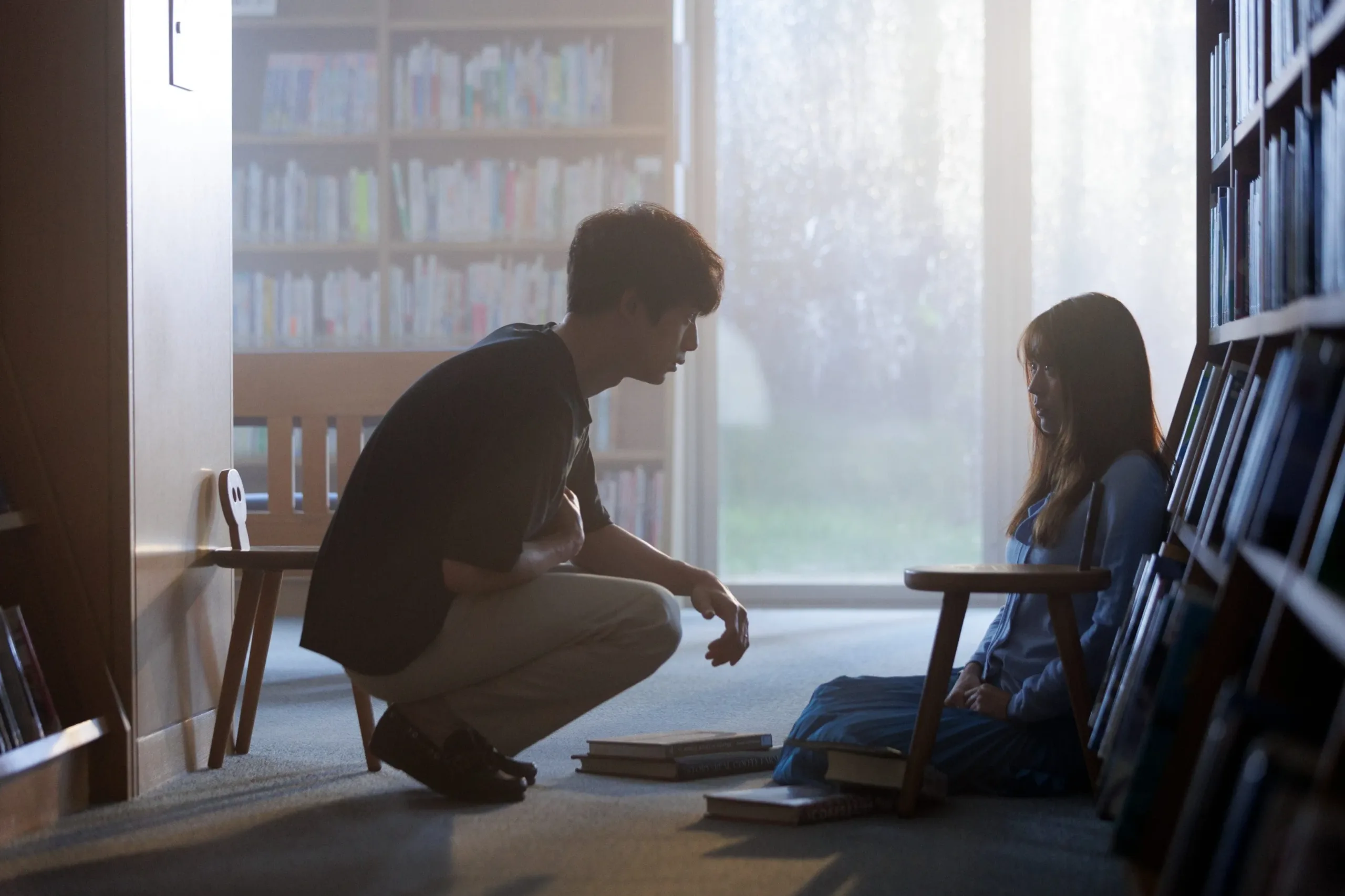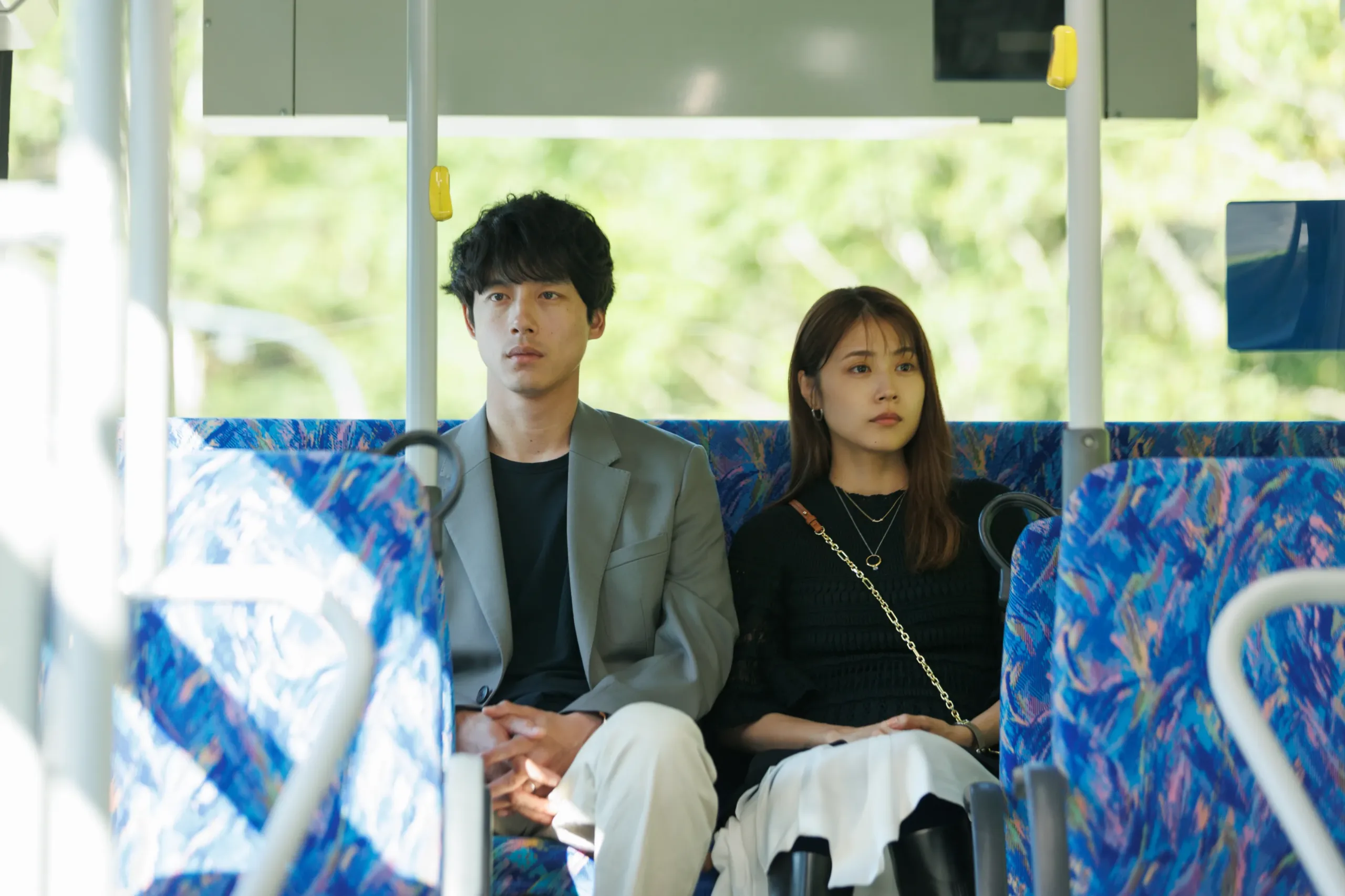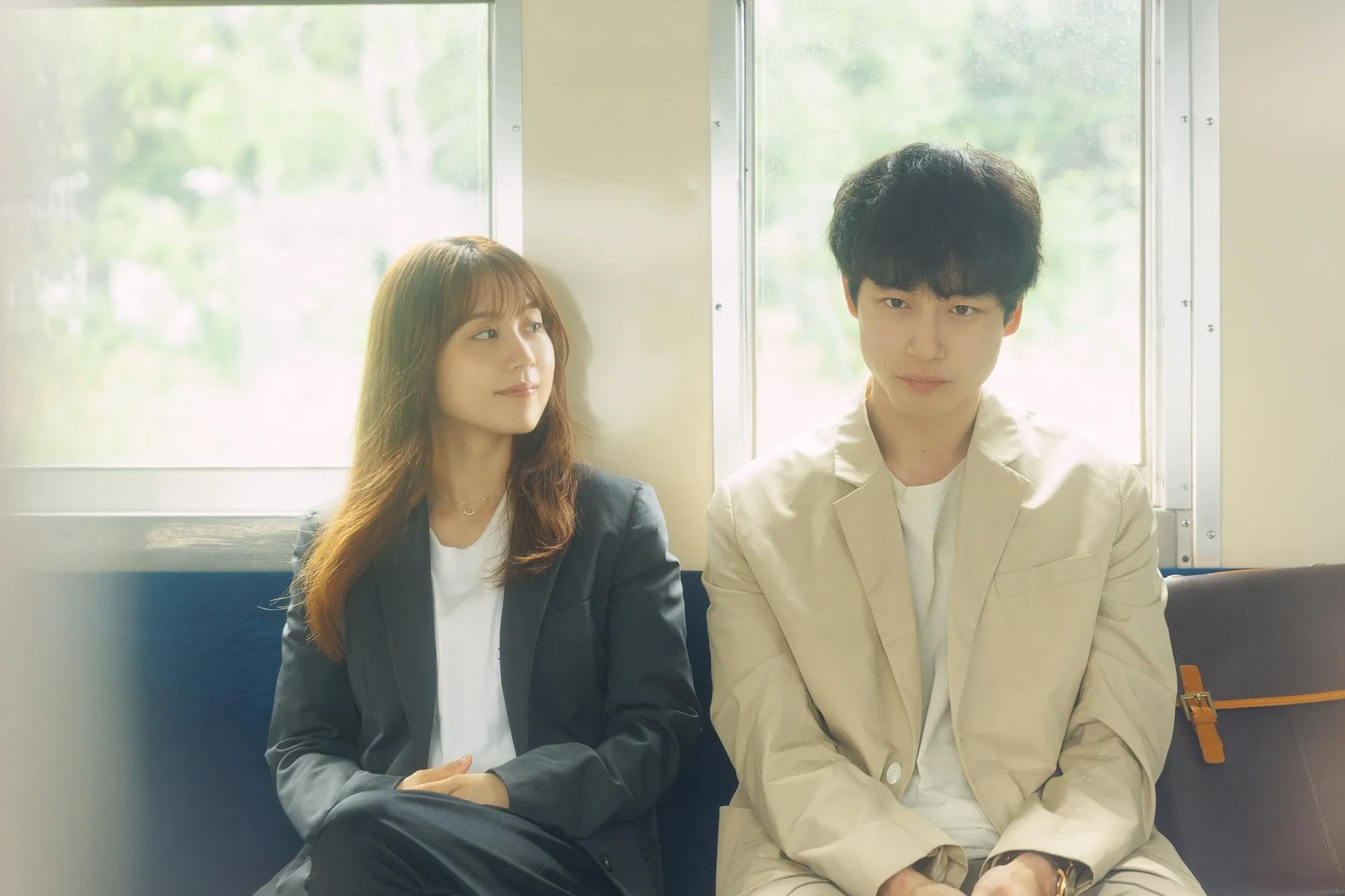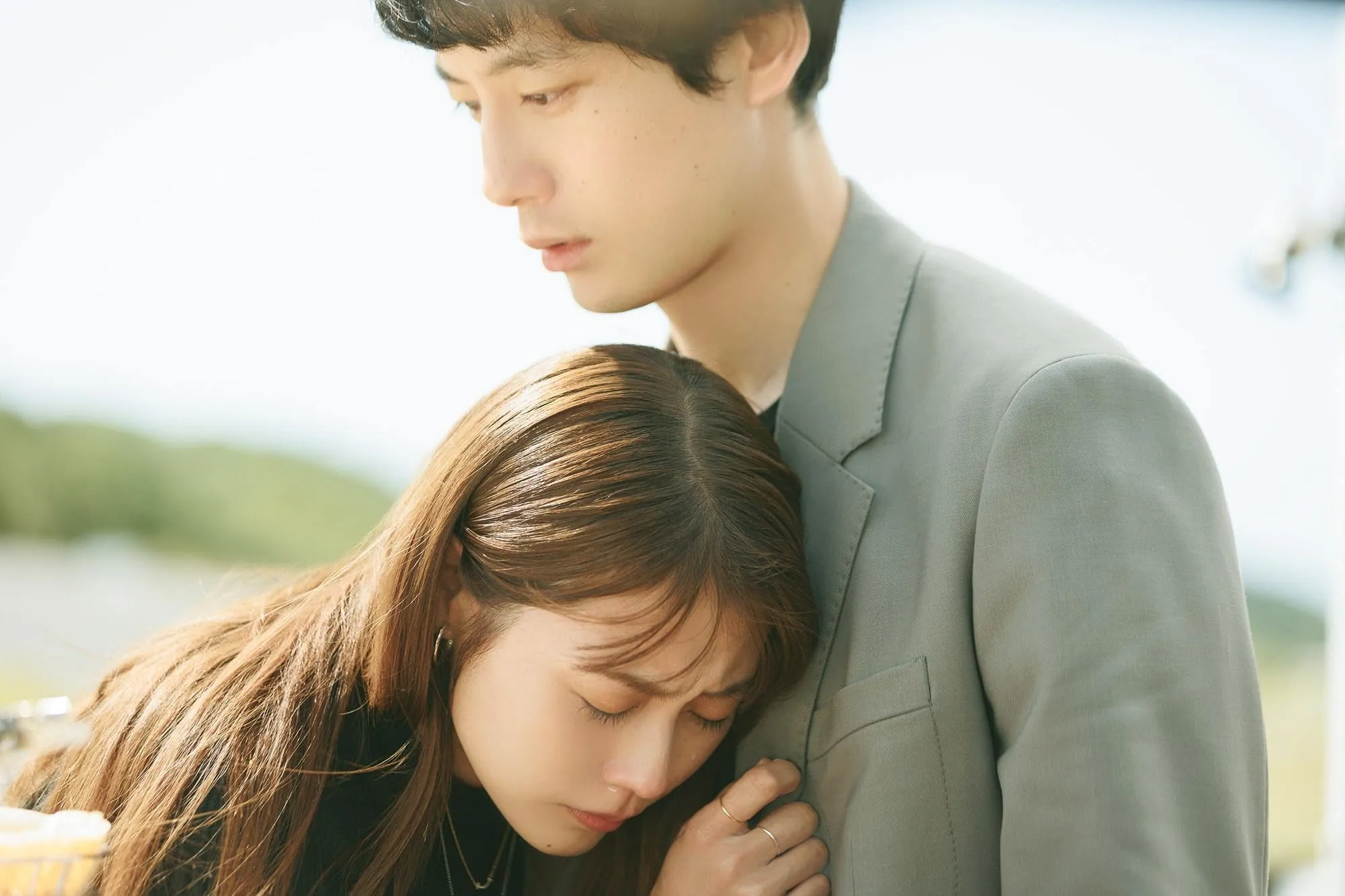In the first moments of Beyond Goodbye, we are treated to a charming yet tragic scene: a bus travelling through a wintry countryside, the air thick with expectation as Yusuke prepares to propose to Saeko.
A promise of forever captured in a single glance is a moment of warmth. However, disaster strikes before the words can fully form—a devastating avalanche that shatters their happiness and plunges Saeko into a gulf of grief. This abrupt turn of events is more than just a story device; it provides the framework for a profound examination of love, loss, and the haunting echoes of memory.
As the narrative progresses, we discover that Kazumasa, a man grappling with his own mortality, uses Yusuke’s heart as a lifeline. The transplant acts as a tangible and symbolic link between the past and the present, blurring the boundaries of identity and emotional connection. Flashbacks gracefully tell the story of Saeko and Yusuke’s shared dreams, including a common love of coffee, lively talks, and tender moments that characterize their bond.
But among this tapestry of memories, Saeko’s journey takes a new turn when she meets Naruse, the heart recipient. Their complicated and layered relationship allows Saeko to battle with her grief while seeking solace in her lost love’s familiar characteristics.
This interplay of memory and experience generates significant problems, such as what remains of a person after they die. Is it their essence, memories, or something ethereal? As I reflect on my own experiences with loss, I find myself wrestling with these themes, mindful of how readily we may romanticize grief while yet feeling its creeping weight. The series asks us to ponder whether the memories we cherish can be transferred, not just through organs, but through the very fabric of our interactions and connections.
Echoes of the Heart: Navigating Grief and Identity in Beyond Goodbye
In Beyond Goodbye, grief is more than just an emotional backdrop; it is an active character that influences the choices and fates of the people it affects. Saeko’s mourning journey profoundly explores how loss reshapes our identities.
We witness her navigate the cloud of despair after the avalanche that claimed Yusuke, grappling with memories that both comfort and pain her. Her struggle is raw and honest, a reflection that will strike a deep chord with anybody who has felt the world shift beneath them. In my own life, I’ve discovered that grief is a labyrinth, with each step leading to nostalgia, fury, or intense sadness, sometimes all at once.
Saeko’s connection to Yusuke is more than just a memory; it embodies the essence of love and loss. The series wonderfully depicts how memories can be both a haven and a prison. When she meets Naruse, the heart recipient, her grief takes on new meaning, raising issues about how we carry our loved ones with us. Are they kept in our memories, or do they resurface in the lives of others? This idea touches a particular chord with me; I’ve often wondered if the echoes of individuals we’ve lost linger in the hearts of those they never met, shaping their choices and feelings in unseen ways.
Then, there’s the philosophical quandary expressed in Naruse’s character. The heart transplant catalyzes dramatic transformation, sparking sparks of Yusuke’s essence within him. It raises uncomfortable concerns about identity: if memories can be transferred, what does it mean to be oneself?
Are we simply a collection of experiences, or is there an essential character that defines who we are? This blurring of lines encourages us to confront the fragility of our identities, which I find both fascinating and frightening. As I ponder these issues, I find myself grappling with my uncertainties—how much of who I am is influenced by the people I have loved and lost? Beyond Goodbye is a delicate dance of memory and identity that holds a mirror to our own hearts, reflecting the complexities of love, loss, and the unending desire for self in the shadows.
Threads of Connection: The Complex Tapestry of Characters in Beyond Goodbye
Beyond Goodbye centres on Saeko, a dynamic character whose journey from joy to profound grief is heartbreaking and transformative. Initially, she embodies the sweet purity of love, and her life is linked with Yusuke’s in a dance of dreams and ambition. However, when a horrible catastrophe shatters her world, we witness her journey into a gloomy realm of mourning.
As I reflect on my own loss experiences, I realize that Saeko’s arc speaks to me personally; her struggle to navigate the stormy rivers of grief is stunningly true. Her pain is obvious in the quiet moments—when she grips a coffee cup or stares at a familiar location—an emotional weight that lingers long after the screen disappears.
Despite his absence, Yusuke is a potent catalyst in this complicated web of relationships. Infusing the narrative with warmth and laughter, his vivid personality appears via flashbacks. He embodies the joy of living fully, a spirit that lingers in Saeko’s heart and, intriguingly, in Naruse’s new identity. He is not simply a memory. Even in his absence, Yusuke’s presence is felt, forcing the audience to ponder the long-term impact that love can have, even after death. I frequently question how individuals we love continue to shape us long after they’re gone, and Yusuke’s character enables us to explore that topic.
Then, there’s Naruse, a man grappling with a newfound existence formed by Yusuke’s essence. His struggle to reconcile his identity with the memories and feelings that have flooded his mind is compelling and moving. As he navigates this odd experience, his connection with Saeko is a lifeline, bridging the gap between past and present. In vulnerable moments, I find echoes of my uncertainties about self—how much of who we are is influenced by the lives we share. Naruse’s voyage raises disturbing but important concerns about identity and belonging.
Miki, Naruse’s wife, provides a separate narrative; her reactions to Naruse’s alterations add complexity to the story. Initially portrayed as a caring partner, she gradually transforms into a figure of tension and struggle, with her inability to comprehend Naruse’s experience alienating him further.
Her character contains a palpable irony: although she grapples with the fear of losing her spouse, she unintentionally isolates herself from the essence of who he has become. How often do we fail to recognize the suffering of those closest to us because we are caught up in our fears and insecurities? I find myself wrestling with my sympathies here. Miki’s character reminds us of the fragility of relationships, especially when confronted with the unknown.
Each character in this intricate tapestry embodies a different aspect of love and loss, compelling us to reflect on our own connections and the permanent traces left by those we care about.
The Visual Poetry of Beyond Goodbye: Landscapes of Emotion
Beyond Goodbye’s cinematography is more than just a backdrop; it is a key character in its own right, connecting the narrative’s emotional connections. The locales, shot against the breathtaking contrasts of Hokkaido’s cold landscapes and Hawaii’s lush, sun-kissed panoramas, serve as a canvas for the characters’ travels.
Each setting is carefully chosen, enhancing the story’s emotional resonance—Hokkaido’s frigid, austere beauty mirrors Saeko’s profound grief, while Hawaii’s setting represents transitory joy and the bittersweet quality of memory. As I watch, I’m reminded of my trips and how particular places may create feelings that linger long after you leave, much like Saeko’s memories.
The combination of colour and lighting throughout the series is remarkable. An intentional interplay of shadow and light symbolizes the characters’ emotional conflicts. In Saeko’s moments of sadness, dark hues surround her, while golden tones emerge during fleeting memories of love and joy, creating a visual duality that echoes the narrative’s emotional environment. This intelligent lighting strategy enables viewers to observe and feel—a technique weaker movies frequently fail to achieve.
The precise set design exemplifies production excellence, with details telling their stories. Every coffee shop and bus feels lived-in as if echoing the laughter and heartaches of those who came before.
The cinematographer’s wide shots depict not only the characters but also their connections to the world around them, underlining grief’s isolation in the face of life’s beauty. They remind us how our environments shape our experiences, an idea that lingers with me as I reflect on the places that have marked my own emotional landscape. Beyond Goodbye’s visual beauty elevates the narrative, creating a complex tapestry long after the credits roll.
The Soundscape of Beyond Goodbye: Melodies of Memory and Emotion
Beyond Goodbye’s soundtrack delicately crafts a tapestry of sound that echoes the narrative’s emotional currents. The opening theme, “Azalea” by Yonezu Kenshi, is more than just a song; it evokes the melancholy essence of the story. The melodic song reflects the delicate balance of hope and sorrow, setting the tone for viewers to enter Saeko’s world, which dances between joy and terrible loss.
As I listen, I find myself transported, reflecting on how words frequently fail to portray the feelings that music can. It’s a reminder of the tunes that linger in our memories long after our relationships have faded, shaping our narratives in ways we frequently overlook.
The score enhances critical sequences with emotional precision that hits home. During quiet moments of reflection, the music softly swells as if holding room for the characters’ grief, allowing viewers to feel the weight of their sorrow. In contrast, the score lifts during short moments of joy, evoking the lightness of love and connection.
This duality reflects my personal experiences, in which the soundtrack of life frequently switches abruptly, emphasizing the tremendous emotional landscapes we traverse. The way the music surrounds important situations produces a rich audio experience that complements the visual storytelling, reminding us that every heartbeat and tear can be accentuated by a tune that lingers in the air.
Interwoven Hearts: The Complexity of Relationships in Beyond Goodbye
At the heart of Beyond Goodbye is Saeko and Naruse’s touching friendship, two souls navigating the murky waters of shared grief and unspoken memories. Their connection is gently formed, blooming from the ashes of loss as they find solace in each other’s presence.
Still haunted by Yusuke’s memory, Saeko perceives Naruse as a ghostly reflection of her past love, walking among the living. It’s a frightening yet beautiful dynamic that will strike a chord with everyone who has ever sought solace in the familiar after a tragic loss. I’ve frequently found myself in similar situations, where the echoes of a loved one linger, affecting new relationships as we struggle to piece together our broken hearts.
The contrast between Saeko’s relationships with Yusuke and Naruse is stark. Her love for Yusuke is lively and full of life, fueled by shared dreams and laughter. In contrast, her bond with Naruse is tinged with melancholy, a subtle understanding neither can properly describe. It feels like a dance between honouring the past and daring to start over—a topic that echoes my uncertainties about going forward after loss.
Miki’s character, as Naruse’s wife, provides another layer of complexity to this narrative tapestry. Her presence frequently casts a shadow on Saeko and Naruse’s growing connection as she grapples with her fears and inadequacies.
Miki’s struggle to accept Naruse’s transition produces tension that reverberates throughout the series, leading Saeko to confront her feelings of remorse and longing. Beyond Goodbye reminds us of how linked our lives can become and how the presence of one person may shape the dynamics of others, leaving us to examine our own intentions and aspirations. It enables us to reflect on the subtle ways in which love and loss may reshape our relationships, encouraging us to appreciate the messy beauty of human emotion.
Navigating the Heart’s Terrain: Reflections on Beyond Goodbye
Beyond Goodbye is a monument to the complexities of love and loss and the weak threads that connect us to those we’ve loved. The series marks a dramatic exploration of grief, masterfully conveyed through Saeko’s journey and the complex relationships she navigates. The cinematography portrays the emotional terrain with agility, allowing viewers to feel both the frost of her sorrow and the warmth of her memories.
However, while the visual and audio aspects create a beautiful tapestry, the narrative occasionally stumbles under the weight of its ambition. There are moments when the plot feels meandering as if it is attempting to find a unified path, leaving me questioning the ultimate purpose of various character journeys.
As I reflect on my experiences with narratives of love and loss, I find myself wrestling with the series’ dual nature—its ability to elicit strong emotion while occasionally stumbling over its narrative complexities. It appeals to people who value a deep study of grief but may leave those looking for a more conventional romance feeling lost.
Beyond Goodbye is a great excursion for fans who enjoy introspective dramas that delve deep into the human experience. Fans of character-driven dramas that explore the merging of memory and identity may find solace here.
This series would likely appeal to anyone who likes the emotional weight of Your Lie in April or the introspective nature of A Place Further Than the Universe. As we navigate our own heartaches, Beyond Goodbye serves as a subtle reminder of the beauty that can arise from adversity—a notion worth cherishing.
The Review
Beyond Goodbye
Beyond Goodbye is a masterfully produced exploration of love and loss, enhanced by magnificent photography and a hauntingly moving soundscape. While the narrative occasionally falters, the emotional depth of Saeko's journey and the complexities of her relationships have a significant impact. The series highlights the bittersweet aspect of memory and the struggle to go on, making it a compelling watch for fans of character-driven dramas. However, its tempo and some narrative flaws may leave some viewers seeking more details.
PROS
- Captures the intricacies of grief and love effectively.
- Beautifully showcases the contrasting landscapes of Hokkaido and Hawaii.
- Engaging arcs for Saeko, Naruse, and Yusuke.
- The soundtrack enhances the emotional resonance of key scenes.
CONS
- Some episodes feel slow or meandering.
- Occasional lack of clarity in character motivations and arcs.
- Some supporting characters lack depth and development.



















































